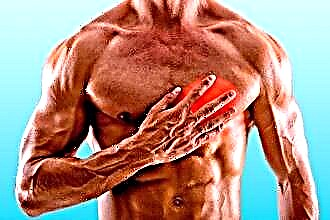In 2016, the number of smokers worldwide reached one billion. Every fourth person smokes on the territory of the former CIS countries. The widespread prevalence of a bad habit among the young population is becoming one of the main causes of cardiovascular morbidity and mortality. Heart pain from smoking is not a myth, but a proven pathological reaction to the multidirectional effects of tobacco, as well as other options for inhaling smoke (hookah).
The effect of smoking on the cardiovascular system
The tobacco smoke of cigarettes contains about 60 surfactants, including nicotine, tar, acetone, hydrogen sulfide, nitrobenzene, ammonia. Nicotine has the most pronounced effect on the vessels of the human body.
The main mechanisms of vascular damage in smokers:
- indirect effect on the endothelium (inner layer) - due to damage to the integrity and smoothness of the vascular wall, blood clots form;
- violation of rheological characteristics - regular use of tobacco increases the viscosity of the blood;
- activation of the sympathoadrenal system with an increase in the release of catecholamines (adrenaline, norepinephrine), an increase in the frequency and strength of the heartbeat;
- peripheral vasospasm (contraction of the smooth muscles of arterial vessels) narrows the lumen of the vessel, reducing the volume of blood that is delivered to organs and tissues;
- violation of lipid metabolism - in chronic smokers, the level of cholesterol and low-density lipoproteins, which are risk factors for the development of atherosclerosis, increases in the blood.
The accumulation of other toxins that penetrate the walls of the alveoli into the blood causes a generalized effect on other organs and tissues. Disturbed metabolism increases the concentration of under-oxidized products, inhibits natural antioxidant systems. Because of this, secondary tissue damage develops.
In recent years, more and more talk about the function of the endothelium and its participation in the regulation of the cardiovascular system. It has been proven that it is an endo- and autocrine element that synthesizes and releases substances to control vascular tone and homeostasis. Nicotine and carbon monoxide act on the surface of endothelial cells, reduce the amount of prostacyclin and slow down parietal blood flow. Because of this, the intima-media complex thickens. In addition, the production of vasodilators (nitric oxide, which is synthesized from L-arginine) decreases, which leads to persistent spasm; the concentration of interleukins increases, contributing to the progression of inflammation and the formation of atherosclerotic plaques.
Studies have shown that the amount of pro-inflammatory blood substances (C-reactive protein, homocysteine, fibrinogen) directly depends on the number of cigarettes smoked and the concentration of carbon monoxide: the content of carboxyhemoglobin increases, as a result of which the body's tissues suffer from a lack of oxygen and an excess of under-oxidized products. Also, due to inflammation factors, an already formed atherosclerotic plaque (the main component in the formation of blood clots) is ruptured.
C-reactive protein affects angiotensin receptors, causing spasm and an increase in the number of smooth muscle cells in the vascular wall and their hypertrophy. This is one of the factors in the development of hypertension in a smoker. The biochemical activity of cells is also changing - they actively begin to participate in lipid oxidation, pushing the progression of inflammatory processes and the formation of free radicals.
Nicotine and carbon monoxide trigger a cascade of interrelated reactions that adversely affect the microvasculature, causing atherosclerotic vascular lesions, blood clots and increased blood pressure.
How smoking affects blood pressure can be found in the video below.
Can a heart ache from cigarettes and why
Cardialgia is pain in the region of the heart, which is caused by a violation of the blood supply to the myocardium due to damage to the coronary vessels. The pain in the organ arising after smoking is associated with the complex effect of active substances from tobacco smoke on these vessels:
- the development of atherosclerotic plaques due to impaired lipid metabolism;
- Viscous blood in the area of the plaque causes a thrombus (blood clot) to form.
- increased blood pressure due to increased release of catecholamines, which disrupts the linear blood flow through the vessels;
- rupture of an unstable plaque, the free part of which clogs the lumen of the coronary vessel, initiating the development of acute coronary syndrome (preliminary diagnosis of myocardial infarction);
- an increase in the frequency and strength of heart contractions is accompanied by an increase in myocardial demand for oxygen and nutrients. Due to damage to the lungs and blockage of blood vessels, the required amount of gas is not supplied and myocardial ischemia occurs with a characteristic symptom of chest pain (angina pectoris).
The appearance of pain in the heart when inhaling after smoking is explained by reflex vasospasm in response to exposure to cold (in comparison with smoke) air. Such patients complain of dizziness, weakness and respiratory failure - the inability to inhale or exhale, a feeling of temporary paralysis of the respiratory muscles.
The menthol capsule in a cigarette is designed not only to eliminate the unpleasant smell of tobacco, but also to dilate blood vessels and prevent vasospasm.
Is it worth it to throw
The studies carried out prove that the human body is completely cleared of the influence of tobacco or other types of smoke (marijuana and cannabinoids) within 1.5 years from the moment of stopping smoking.
Quitting a bad habit becomes more difficult depending on the length of time you smoke. A gradual decrease in the number of cigarettes used is one of the options to get rid of the harmful factor, but in this case, nicotine continues to affect the vessels for some time. But when you try to abruptly fail, there is no risk of acute reactions from the cardiovascular system.
Unpleasant or painful sensations in the chest area are characterized as withdrawal symptoms caused by "addiction". Even long-term chronic smokers report a decrease or complete disappearance of heart pain after quitting smoking.
People who are trying to quit smoking, while overcoming attachment to both a process and a complex of movements, are recommended to use an electronic cigarette or nicotine-free vape. The mechanism of the device allows you to simulate the smoking process without harm to health, since only flavored vapor is inhaled.
Patients who have a heartache from an electronic cigarette need to consult a psychotherapist, since such a phenomenon is a sign of a psychosomatic disorder.
Conclusions
The definition of smoking as one of the main risk factors for the development of cardiovascular diseases is due to the multidirectional effects of nicotine and other substances in tobacco smoke: vasospasm, accelerated heart rate, increased blood pressure. People who have shortness of breath and heartache from cigarettes need to think about giving up the habit, while irreversible changes in organs and tissues have not yet formed.



